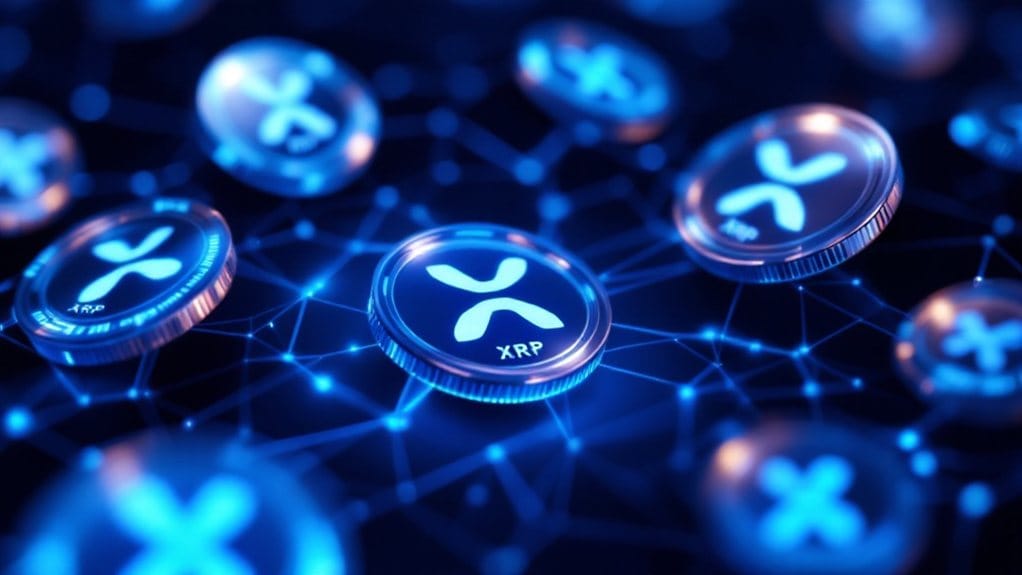In 2024, Bitcoin remains the dominant mining option, requiring specialized ASIC hardware and substantial energy resources, while Monero offers CPU-friendly mining accessibility through its RandomX algorithm. Ethereum Classic and Ravencoin present viable alternatives for GPU miners, utilizing Etchash and KAWPOW algorithms respectively. Mining profitability depends on hardware efficiency, electricity costs, and market conditions, with pooled mining recommended for consistent returns. Understanding these critical factors reveals the potential for sustainable cryptocurrency mining success.

While cryptocurrency mining remains a potentially lucrative venture in 2024, determining the most profitable coins to mine requires careful analysis of multiple factors, including hardware requirements, electricity costs, and market dynamics.
Bitcoin continues to dominate the mining landscape, requiring specialized ASIC miners for profitability, though the substantial initial investment and high energy consumption make it primarily viable for large-scale operations with access to cheap electricity. With current block rewards of 3.125, Bitcoin mining necessitates participation in mining pools for consistent returns.
Monero presents an attractive alternative for individual miners, utilizing the RandomX algorithm that remains CPU-friendly and ASIC-resistant, enabling profitable mining with standard computer hardware while maintaining lower operational costs. The privacy-focused cryptocurrency’s block rewards and consistent market demand contribute to its sustained mining viability, particularly for those seeking entry into crypto mining with minimal initial investment. Zcash mining operations tend to favor ASIC rigs for optimal profitability in the current market.
Monero’s CPU-friendly mining approach and privacy features make it an ideal entry point for newcomers to cryptocurrency mining.
Ethereum Classic has emerged as a notable mining option following Ethereum’s shift to proof-of-stake, offering GPU miners a familiar proof-of-work alternative with established market presence. The Etchash algorithm maintains reasonable difficulty levels, allowing miners with mid-range graphics cards to participate effectively in mining operations, either independently or through mining pools.
Ravencoin stands out as an increasingly popular choice for budget-conscious miners, implementing ASIC-resistant algorithms that favor GPU mining setups. Its KAWPOW algorithm guarantees broader accessibility while maintaining competitive mining rewards, though profitability fluctuates with market conditions and mining difficulty adjustments. The current market capitalization stands at $2.68 trillion across all cryptocurrencies.
Litecoin and Dogecoin, both utilizing the Scrypt algorithm, remain viable options for miners with access to appropriate hardware, offering established market presence and relatively stable mining rewards. The success of mining these cryptocurrencies depends heavily on electricity costs and hardware efficiency, with pooled mining often providing more consistent returns for smaller operations.
Mining profitability tools and careful monitoring of market trends, difficulty levels, and operational costs remain crucial for identifying the best mining opportunities and maintaining sustainable mining operations in the evolving cryptocurrency landscape.
FAQs
What Hardware Components Wear Out Fastest When Mining Cryptocurrency?
During cryptocurrency mining operations, ASIC chips experience the fastest deterioration due to continuous computational stress and heat exposure.
Cooling fans follow closely, requiring frequent replacement due to dust accumulation and bearing wear.
Power supply units often fail prematurely from electrical load fluctuations, while heat sinks and thermal pipes gradually lose efficiency through extended use.
Connection ports and cables also degrade from repeated physical handling.
How Much Electricity Does Crypto Mining Consume on Average per Month?
Cryptocurrency mining consumes approximately 150-170 terawatt-hours (TWh) annually, translating to roughly 12.5-14.2 TWh per month globally.
Individual mining operations’ electricity usage varies greatly, ranging from 900-4,500 kWh monthly for small-scale setups to over 50,000 kWh for large mining farms.
This consumption is influenced by factors including hardware efficiency, cooling requirements, and the cryptocurrency being mined.
Can I Mine Different Cryptocurrencies Simultaneously With the Same Equipment?
Through merged mining, cryptocurrencies using the same hashing algorithm can be mined simultaneously with a single piece of hardware.
This process requires compatible mining pools and AuxPoW support from the auxiliary blockchain.
For example, Bitcoin and Namecoin both use SHA-256, allowing concurrent mining, while mining Ethereum (ETH-hash) and Bitcoin (SHA-256) simultaneously would require separate equipment due to different algorithms.
Are There Legal Restrictions on Cryptocurrency Mining in Certain Countries?
Several countries have implemented strict legal restrictions on cryptocurrency mining.
China enacted a complete ban in 2021, while Algeria, Nepal, and Bangladesh explicitly prohibit mining activities.
Environmental concerns have led nations like Kosovo and Iceland to restrict mining operations due to energy consumption issues.
Other countries, including Norway and Sweden, have implemented regulatory frameworks and removed tax incentives to control mining activities’ environmental impact.
What Happens to Mining Profitability After a Cryptocurrency Undergoes Halving?
Mining profitability typically decreases immediately after halving events as block rewards are reduced by 50%, directly impacting miners’ revenue streams.
Historical data shows that while some miners may exit the market due to unsustainable operations, surviving miners often benefit from reduced network competition and potential price appreciation.
Successful miners adapt through technological upgrades, energy optimization, and diversification strategies, including participation in mining pools and exploring additional revenue sources like transaction fees.









